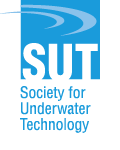Overview
Subsea Engineering deals with the design, construction, installation, operation, maintenance and decommissioning of equipment in the ocean or on the seabed. Subsea engineers are engaged in managing activities throughout the asset lifecycle within various industries such as upstream oil and gas, marine/maritime and renewables.
Some of the activities that may be undertaken when practising as a Subsea Engineer include:
- Design of process, structural, corrosion, mechanical, controls or transmission elements
- Designing subsea gathering facilities for hydrocarbon recovery or renewables
- Manufacture and fabrication of subsea equipment and hardware
- Installation engineering for different types of subsea equipment
- Management or support of marine operations
- Intervention and repair operations by ROV or divers
- Asset integrity management of subsea equipment
- Support of subsea well intervention operations
- Decommissioning of facilities
These activities could take place in any of the following subsea engineering domains. A competent subsea engineer will practice in one or more areas, including:
- Field Development Planning / Concept Selection
- Corrosion and Materials Engineering
- Flexible Flowlines and Risers, Umbilicals and Cables
- Geotechnical Design
- Subsea Structural Engineering
- Subsea Mechanical Engineering
- Subsea Control Systems
- Dynamic Systems Design and Analysis
- Construction Engineering and Construction Spread Management
- Pre-Commissioning & Commissioning
- Subsea Asset Management
- Renewable Energy
- Environmental Engineering
- New Technology Development and Qualification
- Safety and Risk Engineering
- Subsea Well Intervention
- Project Management
- Decommissioning
The Subsea Engineering Competency Programme
- Initiative: by SUT (Perth Branch) in conjunction with industry
- Intent: Subsea Engineering to be recognised as an Area of Practice (AoP) by Engineers Australia (EA)
- SUT to provide the basis for technical assessment in the AoP of Subsea Engineering.
- SUT to support EA with the technical assessment of submissions for recognition in the AoP of Subsea Engineering
- Benefits: a career planning tool and personal recognition as a competent subsea engineer, which is recognised in Australia and Internationally.
Our objectives:
- Clearly identify the elements of competence, what they mean in practice and indicators of attainment required to be assessed as competent
- Identify the roles and responsibilities the subsea engineer will be competent to undertake
- Provide clear assessment criteria
- Have a consistent format to the competency profiles
- Have a consistent approach to describing competencies that reflects best industry practice
Available in 2022:
- Assessment and Accreditation for:
-
-
- Chartered Professional Engineer (Subsea)
- Chartered Engineering Technologist (Subsea)
- Chartered Engineering Associate (Subsea)
-
- Inclusion on the National Engineering Register (NER)
- Inclusion on the APEC Engineer register
- Inclusion on the International Professional Engineers Agreement register
